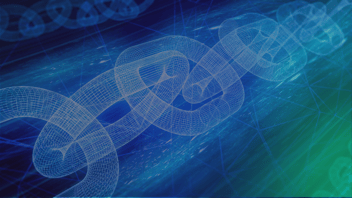The practice of drawing maps of suspicious individuals and connecting them together as part of a network is often seen as a cliche on television. Ironically, this intuitive approach is not commonly used in real-life investigations, despite its effectiveness in analysing financial crimes such money laundering and fraud.
Financial crimes have been plaguing the global economy for years, with an estimated cost of over US$6tn annually. As financial criminals continue to employ increasingly sophisticated methods to conceal their illicit activities, traditional transaction monitoring strategies struggle to keep up. In today's fast-paced, technology-driven world, the fight against such crimes demands advanced analytics and innovative tools to uncover hidden networks and suspicious transactions.
This article explores advanced analytical techniques such as link analysis and graph theory and why existing monitoring systems are falling short.
Limits of Traditional Monitoring Systems
Banks traditionally use a customer's profile and transaction history to generate risk ratings and flag suspicious behaviour. Data, such as transactions, are often stored as rows in relational database tables. Unfortunately, data in this format makes it virtually impossible to decipher the relationships between entities and restricts an investigator's ability to look at the broader picture. There are three implications to this limitation:
Higher false positive rates
Rules-based monitoring systems, due to their simplified nature, focus on detecting simple patterns that do not factor drift in behaviour nor network they operate in. This often results in lower quality alerts.
Higher false negative rates
Criminals can disguise their activities through the use of shell companies, offshore accounts, and complex payment structures. This makes it difficult for financial institutions to identify money laundering networks, which often consist of multiple interconnected parties. In addition, rules are designed to detect known knowns i.e., known money laundering and fraud schemas and typologies. However, criminals are often aware of such typologies and actively attempt to avoid them, making it very difficult for such rules to detect illicit behaviour effectively.
Higher operational costs
Tracing the flow of funds through a web of complex transaction networks would require an enormous amount of time and effort from investigators.
While rules-based approaches are an integral part of the investigation process, the increasing complexity of financial crime has led to a demand for a more advanced approach that can uncover suspicious activity.
Traditional solutions, as they are now, are no longer sufficient as they are unable to accurately identify and analyse the networks and relationships between different parties. This has necessitated the development of new tools and methods, such as link analysis, which is designed to analyse how entities are interlinked.
What is Link Analysis?
Link analysis, also known as network analysis, stems from graph theory, a mathematical framework that uses nodes (or entities) and edges (or relationships) to represent a network.
It is the study of relationships between entities in a network, such as individuals, businesses, and financial institutions. When applied to the world of financial crime, it allows investigators to visualise the connections between these entities, making it easier to identify suspicious patterns, uncover hidden relationships, and pinpoint the key players in criminal networks.
There are two key aspects of network analysis that play a vital role in combating financial crime: the visual representation of networks and the use of graph algorithms. Let's dive into these two aspects and explore how they can unravel the mysteries of financial crime.
1. Link Analysis as a Visual Tool
Visualising networks is a powerful way of understanding the relationships between entities in a financial crime scenario. By plotting these connections on a graph, investigators can see how individuals, businesses, and financial institutions are linked in various ways.
This bird's-eye view allows investigators to explore connections that may not be immediately apparent from raw data, such as links between seemingly unrelated individuals or businesses. This can lead to the discoveries that may be crucial in understanding the full scope of a financial crime network.
2. Graph Algorithms: Centrality and Influence
While the visual representation of networks is an essential tool in itself, network analysis doesn't stop there. Graph algorithms are a set of techniques used to analyse and manipulate graphs in network analysis. These algorithms can be used to identify patterns and relationships within a network, such as:
- Degree Centrality: Measures the number of direct connections an entity has.
- Betweenness Centrality: Measures how often an entity acts as a bridge between other entities in the network.
- Graph Clustering: Identifies groups of nodes that are tightly connected within a network.
In the context of financial crime, graph algorithms can help reveal key players, influencers, and rings within criminal networks, such as masterminds or intermediaries responsible for coordinating illicit activities. By identifying these central figures, investigators can focus their efforts on the most critical targets, potentially disrupting the entire network and uncovering further evidence.
Contextual Link Analysis: Combining AI and Link Analysis
Link analysis used simply as a visual tool is not sufficient on its own for investigating financial crime.
Only providing a visual representation of entities and their connections, does not necessarily reveal which parts of the network are suspicious. In other words, simply looking at a network of connections doesn't automatically indicate which entities or relationships are involved in illegal activities.
To enhance the effectiveness of link analysis, there is a need for a more contextual approach that can highlight suspicious nodes (entities) and relationships within the network.
This is where Artificial Intelligence (AI) can play a crucial role in augmenting link analysis. With AI’s powerful pattern recognition capabilities, techniques such as anomaly detection can be used to identify abnormalities in data over time. For example, an AI system can analyse a large dataset of financial transactions and flag accounts with irregular transaction amounts, frequent transfers to high-risk jurisdictions, or sudden changes in transaction patterns.
It can help investigators focus on specific accounts or individuals that warrant further scrutiny. In addition, AI can by combined with graph theory to find network- specific anomalies, allowing investigators to uncover unusual rings, clusters, or influential entities within a network that may be indicative of criminal activities, such as money laundering or fraud.
This is precisely what the Eastnets solution offers using its Suspicious Activity model. By leveraging historical transactions, SafeWatch AML uses deep learning to detect accounts behaving suspiciously from both, a transactions and network perspective.
The results of these models are integrated with a link analysis visualisation by highlighting nodes (entities) which have been flagged. This allows investigators to intuitively connect the dots during an investigation and identify if an account is or is connected to an account that is suspicious.
As financial crime continues to evolve and grow in complexity, it is essential for financial institutions to adopt advanced analytics and innovative tools to stay ahead in the fight against money laundering, fraud, and other illicit activities.
By combining the power of link analysis, AI, and graph theory, investigators can gain a deeper understanding of the relationships within financial networks, uncover hidden connections, and identify key players in criminal activities. As a result, financial institutions can significantly enhance their risk management strategies, reduce false positives and negatives, and ultimately, contribute to a safer and more transparent global financial ecosystem.





